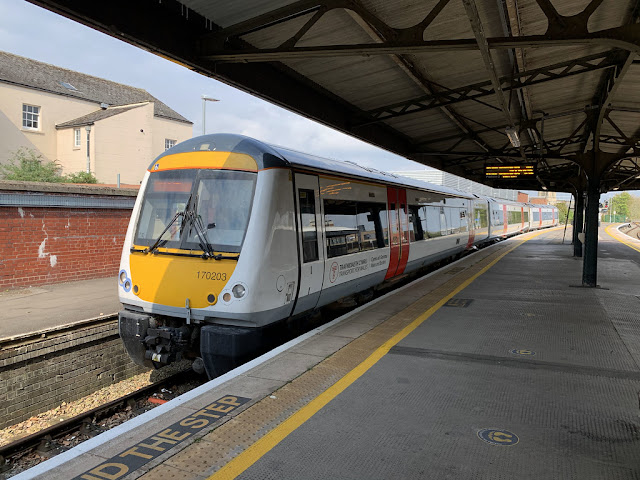One operational drawback with large steam locomotives is driver visibility, when the locomotive is operating smoke box first. The large boiler can make seeing signals and on-track obstacles difficult. The first batch of Type 1 diesel locomotives like the Class 15 and Class 20 shared this problem as they only had a single cab at one end. The Class 17, known as the "Clayton", was an attempt to alleviate this problem with a new standard Type 1 which had a cab sandwiched between 2 smaller and low profile diesel engines [1].
 |
| D8568 at Highley |
| Information |
| Number built: |
117 |
| Built: |
1962-5 |
| Builder: |
Clayton Equipment |
| Engine: |
2 Paxman 6ZHXL diesels
(2 locos were fitted with Rolls Royce D diesels) |
| Power: |
900 hp (672 kW) |
| Wheel arrangement: |
Bo-Bo |
As happened with a number of early British Rail diesel locomotives in the 1960s, amid a clamour to replace steam, series production was agreed and begun before much testing had taken place. In the event this was a real problem with the Class 17 as 117 of them had been built and they proved to be very unreliable. Availability of the fleet dropped to 50% (by comparison the Class 20 was about 90%) with numerous problems including cracked crankcases and oil leaks, some were put into storage straight from the factory.
As the reliability problems continued (even with a couple of examples retro-fitted with Rolls Royce engines), and the kind of light freight traffic they were designed for dropped post-Beeching, British Railways decided to withdraw them after only a few years of service. All were gone from revenue service by 1971.
No Class 17 saw ten years of BR revenue service though a couple remained in departmental service until the late 1970s [2]. One of these, D8568, survived long enough to make it into preservation.
 |
| D8568 in BR blue livery at Kidderminster Town |
 |
| D8568 at Bewdley |
 |
| Overhead view demonstrating the great driver position |
 |
| D8568 brings a train into Chinnor |
 |
| At Kidderminster Town, note how much of the loco length is taken up by the cab! |
[1] Brian Haresnape, Production Diesel-Electrics Types 1-3 (Ian Allan, 1983) p. 74
[2] Colin J. Marsden, 25 Years of Railway Research (OPC, 1989) p. 79















